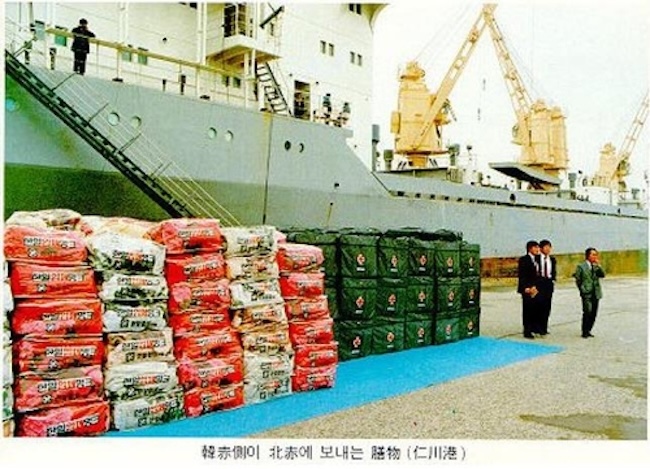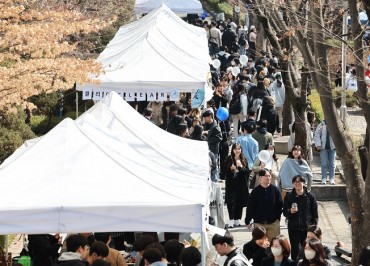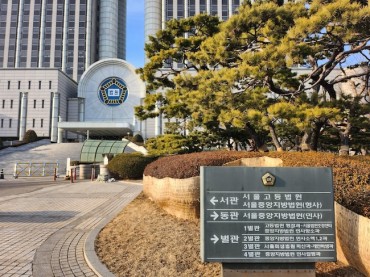
This photo, provided by the Ministry of Unification on July 2, 2024, shows South Korean Bishop Ji Hak-soon (R) meeting with his younger sister in a family reunion event held in Pyongyang in 1985. (Image courtesy of Yonhap)
SEOUL, Jul. 2 (Korea Bizwire) — The unification ministry on Tuesday unveiled newly declassified documents shedding light on inter-Korean talks on sports and humanitarian cooperation from 1981-87, following North Korea’s deadly bombing attack in then Burma in 1983.
The dossier includes minutes of inter-Korean talks in the 1980s, ranging from the issue of fielding a unified team for the 1984 Summer Olympics in Los Angeles and the delivery of North Korean aid for flooding in the South to Red Cross talks over the first-ever reunions by families separated by the 1950-53 Korean War and art troupes’ reciprocal performances in Seoul and Pyongyang.
In January 1982, then South Korean President Chun Doo-hwan proposed a unification initiative calling for the two Koreas to unify based on national self-determination, democratic procedures and peaceful means. But Pyongyang condemned it as an unrealistic vision.
Since then, South Korea offered to hold talks with North Korea, all of which were rejected by Pyongyang. But the situation took a dramatic turn after North Korea staged a bombing attack in Burma, now called Myanmar, in October 1983.
Seventeen high-ranking South Korean officials were killed in the attack, blamed on North Korea, during Chun’s visit to the Southeast Asian country. North Korea claimed it was an attack fabricated by South Korea, but a relevant investigation revealed North Korea was behind it, prompting Burma to sever ties with the North.
Against such a backdrop, North Korea abruptly proposed three-way talks to South Korea and the U.S. in January 1984 in a bid to improve its tarnished image and address its diplomatic isolation.
The North proposal included the issue of signing a peace treaty between North Korea and the U.S. and of adopting a non-aggression declaration between the two Koreas. South Korea suggested the two Koreas first meet to resume dialogue, but the North rejected it.
In March of that year, South Korea’s sports committee proposed talks to North Korea over the forming of a unified team between the Koreas for the 1984 Los Angeles Olympic Games. South and North Korea held three rounds of sports talks, but they fell through.

This photo, provided by the Ministry of Unification on July 2, 2024, shows the arrival in 1985 of North Korean donated goods designed to help South Korean victims of flooding at a port in Incheon, west of Seoul. (Image courtesy of Yonhap)
In September 1984, South Korea accepted North Korea’s proposal to send rice, cement and medicine to help victims of flooding. The dossier showed Seoul initially intended to reject the North’s offer but eventually accepted it. To prepare for the delivery of donated goods, the Koreas agreed to restore a hotline for the first time in four years.
In May 1985, the Red Cross of South and North Korea held talks to discuss the first-ever reciprocal visits to hometowns by separated families and art troupes’ performances in each other’s capital. South Korea focused on the reunion events, but the North prioritized the art troupes’ trip, highlighting a “festive” mood.
North Korea initially called for the need to form 100 members each for a group of separated families and art troupes. But after a few rounds of talks, both sides agreed to set the number at 50, respectively.
In September of that year, separated families crossed the border to visit their hometowns for the first time in about 40 years since Korea was divided. Art performances were also held in Seoul and Pyongyang.
Since first disclosing the declassified documents in May 2022, the unification ministry has made public such dossiers on five occasions, including the latest one.
The dossier consists of 1,693 pages of documents from December 1981 to May 1987, declassified under the ministry’s rules on disclosing documents that date back more than 30 years on past inter-Korean talks.
(Yonhap)






